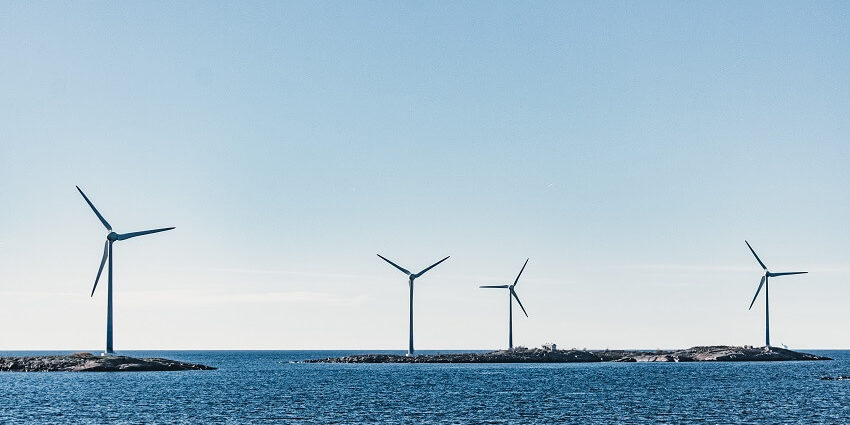
Offshore wind strategies are the new go-to for clean energy. The Northeast Clean Energy Council (NECEC) highlighted this alternative energy source by hosting a webinar on offshore wind. While this webinar was specifically about the opportunities related to wind energy in the US northeast, this topic could be relevant for other locations too – both in the US and in other countries. The world needs alternative renewable energy sources and offshore wind turbines could be an interesting solution.
During the webinar, each speaker represented their state or company and discussed their take on offshore wind energy. Above all, the panelists shared their plans and emphasized the need for teamwork in the industry.
Plans and Targets for Offshore Wind Strategies Partners
Why is there such a buzz for offshore wind in the Northeast?
Joe Cartonne, president of the NECEC, said that the region is “sitting next to an ocean of renewable energy”. A report shows that the US’s growing offshore wind industry presents a 109 billion opportunity for supply chain business by 2030. This statistic only accounts for the spending associated with 32 gigawatts of offshore wind currently in development.
Cartonne compared the offshore wind opportunity in the Northeast of the US to Texas before the oil boom: this really puts the potential of this sector into perspective. The Northeast is the most densely populated area in the US, offshore wind turbines will supply clean energy to this region but also to others.
Two panelists (Amanda Lefton from BOEM and George Sassine from NYSERDA) went into detail on their organizations’ plans for offshore wind energy. They each highlighted the current growth in the industry and share ongoing projects:
Federal Bureau of Ocean Energy Management (BOEM)
The director of the Federal Bureau of Ocean Energy Management, Amanda Lefton, spoke during the webinar. She described the bureau’s plans for offshore wind energy. There are two ongoing projects under BOEM. Not only does it include an 800-megawatt Vineyard wind project, but also a 130 megawatt south port project.
Other projects specific to each costal state include:
Connecticut: Upgrading piers to accommodate offshore wind turbine assembly staging
Massachusetts: Creating a renewable energy center with an on-site battery storage
New Jersey: Building the first of its kind energy port
New York: Launching a manufacturing facility for offshore wind towers and transition piece
Rhode Island: Building a manufacturing facility for wind turbines foundations
From this list, it is very clear that each state of the Northeast region will be contributing to the bigger scope of the offshore wind energy industry. Additionally, BOEM has started the review of nine additional projects. By 2025, it expects to run at least seven other offshore wind farms across the US.
New York State Energy Research and Development Authority (NYSERDA)
George Sassine is the vice president of Large Scale Renewables in the New York State Energy Research and Development Authority. He discussed plans for the NYSERDA, an organization that promotes renewable energy sources in New York.
The main drive of New York’s energy ambitions comes from the Climate Act. While the ultimate goal is to reach 100% clean energy power by 2040, up to 9 gigawatts could come from offshore wind turbines by 2035. It is a top priority to place New York as the national leader for offshore wind energy.
Governor Hochul of New York announced a proposal to invest 500 million USD in the offshore supply chain and initiate the planning of an offshore transmission network. This will create enough energy to power four million NYC homes.

Encouraging Collaboration in the Wind Industry
Throughout the webinar, each panelist echoed the same message: the success of the offshore wind industry depends on teamwork.
Using offshore wind energy requires support from the public sector, and this includes the federal government. The good news is that the offshore wind industry is already gaining support, for example, the Biden-Harris administration is working to deploy clean energy solutions that could also create new jobs.
States also need to work together. Celina Cunningham, the director of the Governor’s Energy Office in Maine, said that each state in the region needs to contribute. If each state keeps doing its own plans to establish wind strategies, it may be hard to work together.
The webinar was a good step in the right direction. As more action is taken, more collaboration is necessary.
Sign Up for Our Newsletter.
Overall, the offshore wind industry is going to be a critical piece of the clean energy puzzle. It’s on target to become a more than 100 billion dollar industry in the US by 2030. As many panelists emphasized, cooperation is needed for success.
This article is republished from IMPAKTER under a Creative Commons license. Read the original article.
 Copy code snippet
Copy code snippet

